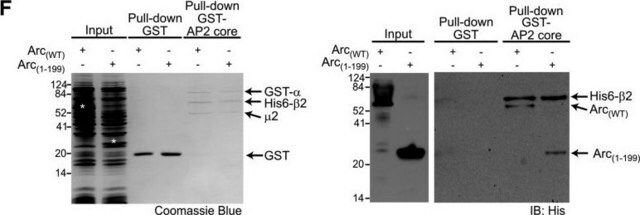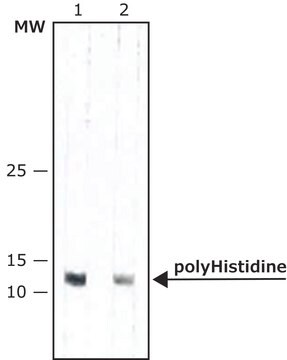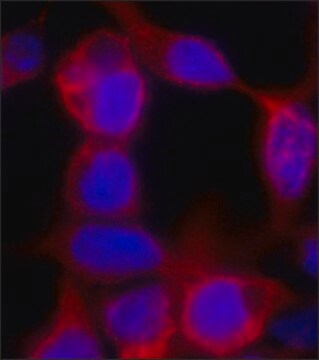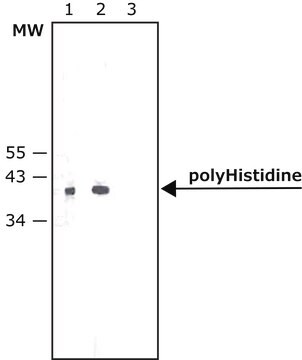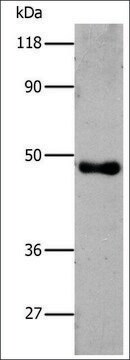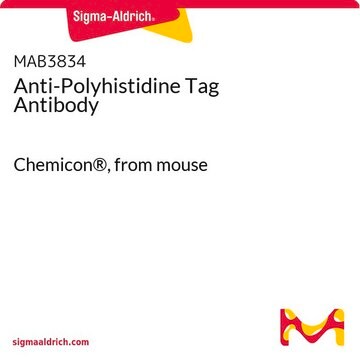A5713
Monoclonal Anti-polyHistidine–Agarose antibody produced in mouse
clone HIS-1, purified immunoglobulin, PBS suspension, suitable for purification of HIS tagged recombinant proteins
Synonym(s):
Monoclonal Anti-polyHistidine, Monoclonal 6 His epitope tag, Monoclonal 6xHis-tag, Monoclonal HHHHHH epitope tag, Monoclonal Hexa His tag, Monoclonal His-tag, Monoclonal His6 tag, Monoclonal Histidine tagged, Monoclonal Poly-His-tag
About This Item
Recommended Products
biological source
mouse
Quality Level
conjugate
agarose conjugate
antibody form
purified immunoglobulin
antibody product type
primary antibodies
clone
HIS-1, monoclonal
form
PBS suspension
isotype
IgG2a
capacity
15-30 nmol/mL binding capacity
suitability
suitable for purification of HIS tagged recombinant proteins
shipped in
wet ice
storage temp.
2-8°C
target post-translational modification
unmodified
Looking for similar products? Visit Product Comparison Guide
General description
Specificity
Immunogen
Application
Western Blotting (1 paper)
Physical form
Preparation Note
Legal Information
Not finding the right product?
Try our Product Selector Tool.
Storage Class Code
10 - Combustible liquids
WGK
WGK 1
Flash Point(F)
Not applicable
Flash Point(C)
Not applicable
Choose from one of the most recent versions:
Already Own This Product?
Find documentation for the products that you have recently purchased in the Document Library.
Our team of scientists has experience in all areas of research including Life Science, Material Science, Chemical Synthesis, Chromatography, Analytical and many others.
Contact Technical Service